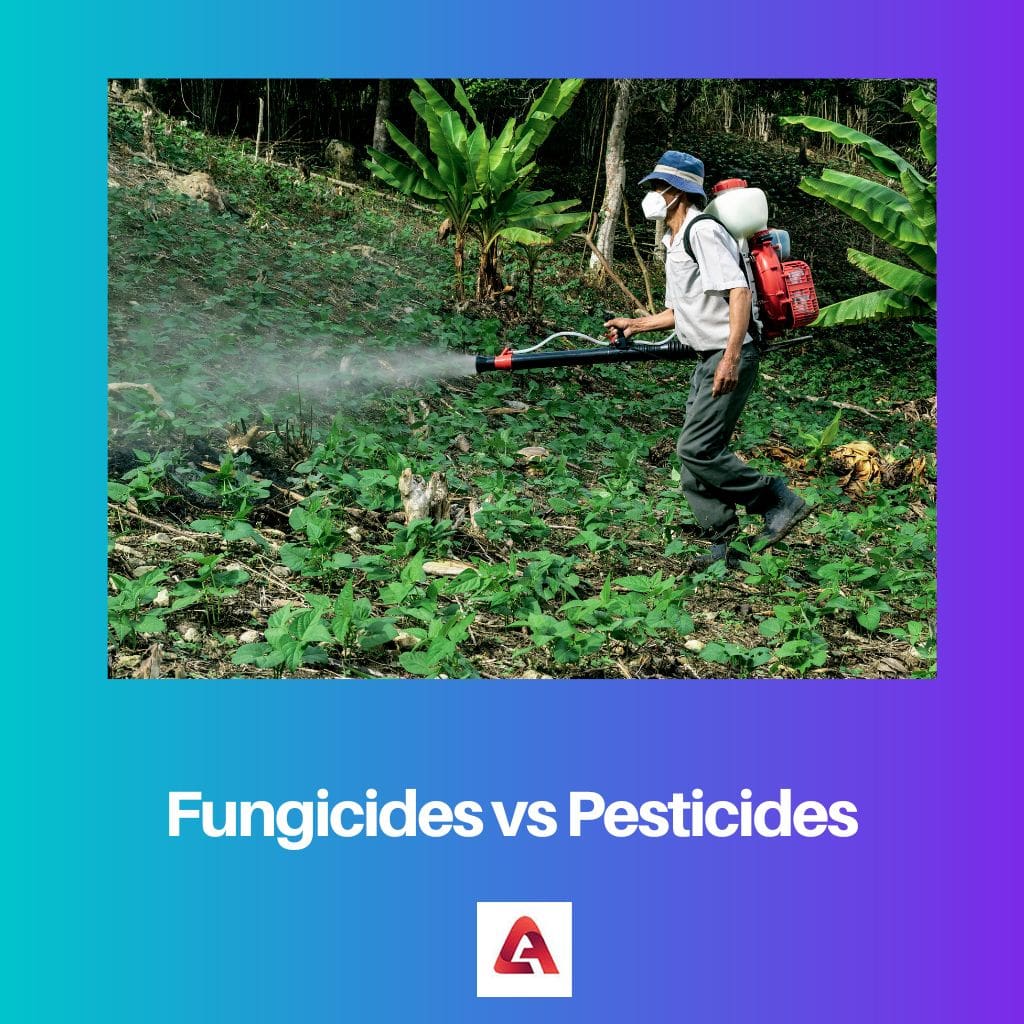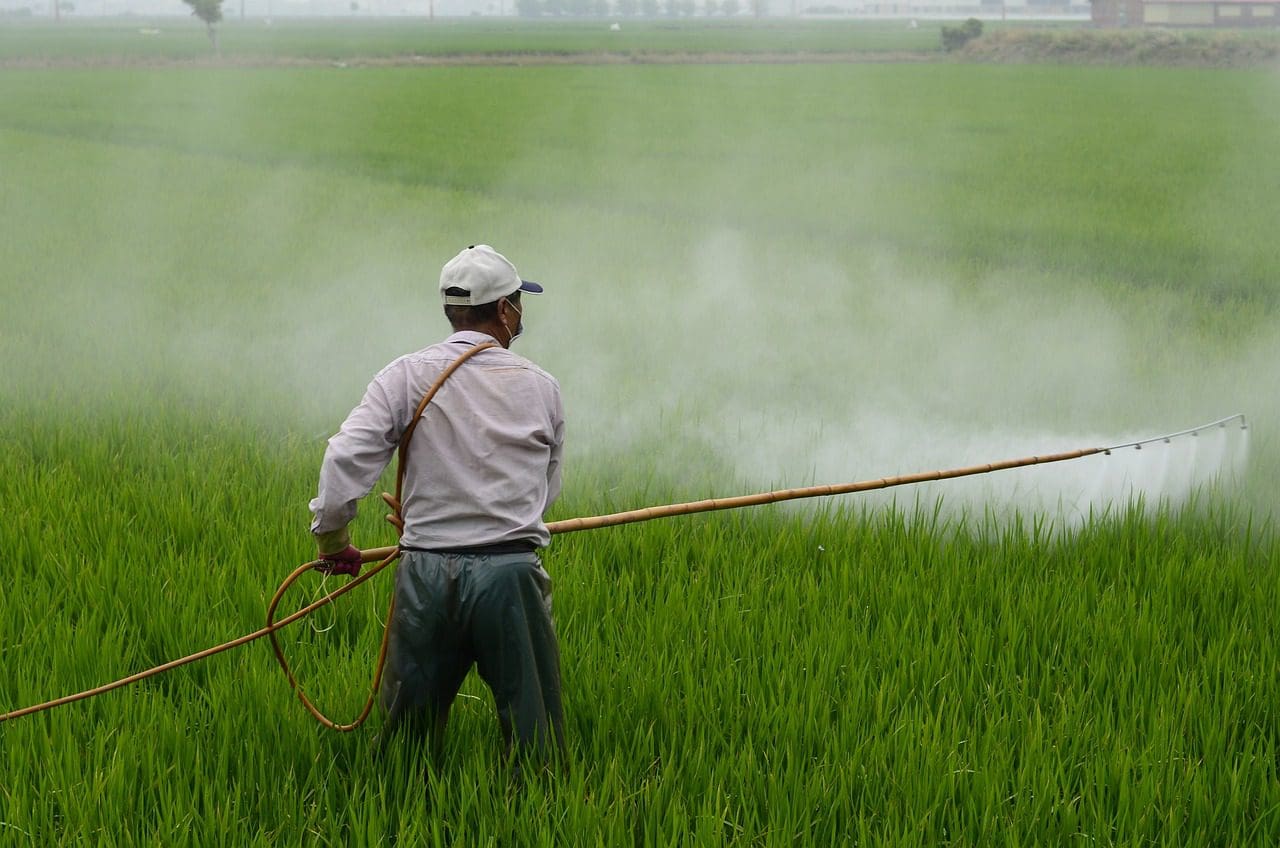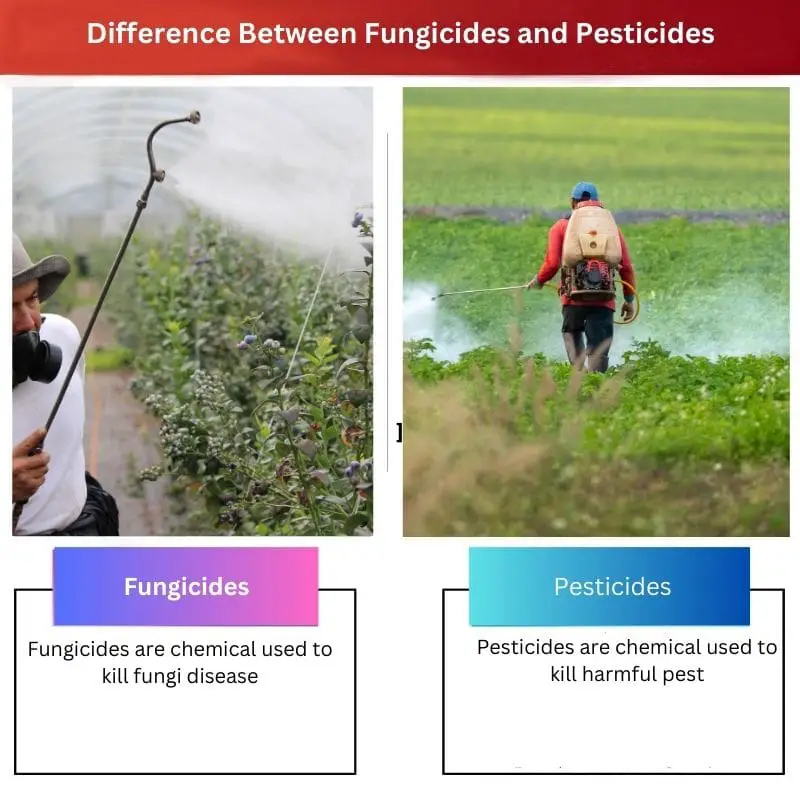When it comes to crop protection, It’s useful to have things on hand to assist you when weeds are threatening to overtake your garden or your prized plants are afflicted with a dreadful disease.
It can be challenging to choose which powder, liquid, or granule to employ, though, given the variety of options available.
The fundamentals are actually fairly easy. A pesticide is any substance that is used to manage, deter, or eliminate plant or animal life. This category also includes fungicides and herbicides. However, they have their individual functions and uses but the same outcome — to ensure the safety and productivity of the crops.
Needless to say, both fungicides and pesticides are the go-to chemicals that are recommended to farmers and plant owners. Also, they come in liquid form.
Key Takeaways
- Fungicides are chemicals specifically designed to control, prevent, or kill fungi and fungal spores, while pesticides are broader in scope, targeting various pests such as insects, weeds, and rodents.
- Fungicides are used primarily in agriculture to protect crops from fungal diseases, whereas pesticides have wider applications in agriculture, public health, and residential settings.
- Both fungicides and pesticides can have environmental and health risks, but they play a crucial role in maintaining crop yield and quality and controlling harmful pests and diseases.

Fungicides vs Pesticides
Fungicides are chemicals used to protect plants from diseases caused by fungi. They tend to increase yield and plant growth by inhibiting fungal growth. Pesticides are chemicals used to save plants from diseases caused by different pests. They control damage caused by pests, thus improving crops.
Diseases cause the majority of plant damage and yield loss. Numerous plant pathogenic species, such as fungi, bacteria, viruses, insects, and nematodes, are responsible for their development. Commonly referred to as pesticides, fungicides, herbicides, and insecticides defend plants against diseases.
As a result, fungicides are effective at preventing fungal illnesses, whereas pesticides primarily work to prevent pest attacks on plants. So, this encapsulates how fungicides and pesticides differ from one another.
Comparison Table
| Parameters of Comparison | Fungicides | Pesticides |
|---|---|---|
| Definition | Fungicides are chemical used to kill fungi disease | Pesticides are chemical used to kill harmful pest |
| Problem | Fungicides have unintended consequences for plants, animals, and the environment when they are used frequently. | Pesticides can be poisonous to other organisms, such as birds, fish, beneficial insects, and non-target plants, and also contaminate soil, water, and other vegetation. |
| Content | Neem oil, copper, Sulphur, rosemary oil. jojoba oil, bacterium Bacillus subtillis, Ulocladium oudemansii and the beneficial fungus | Cellulose organic compounds like carbamate, Inert ingredients such as spices, beeswax, certain edible oils, herbs. and biological agents like beneficial viruses. bacteria, and fungi |
| Uses | Used both in agriculture and in medicine to fight fungal infections in animals | Used in agriculture, human health protection. and environmental protection to fight against insects, plant pathogens. weeds. molluscs, birds, mammals, fish, nematodes, and microbes |
| Example | Mancizeb, maneb, nabam zineb, benomyl. cycloheximide. | Organophosphate, carbamate, organochlorine insecticides, pyrethroid, sulfonylurea herbicides, and biopesticides |
What are Fungicides?
The term “fungicide” refers to a class of pesticides that works by destroying the fungus in order to control fungal infections. One of the main reasons for crop loss worldwide is fungi. Fungicides are biocidal chemical substances or biological agents that are used to kill or stop the spread of fungi or their spores. However, they are ineffective against bacterial, nematode, or viral diseases. They are primarily used to mitigate foliar diseases on a variety of vegetables, fields, fruits, and ornamental crops.
One of the fungicides most frequently used to manage numerous diseases, especially powdery mildews, is sulfur. Since the end of the 19th century, Bordeaux mixture has been used to protect grapes, a practice that extends back to ancient Greek civilizations.
In the last few decades, fungicides have undergone the majority of their most recent advances. Although sulfur is used in its natural state, it is also employed in various other particular forms created by chemical processes.

What are Pesticides?
Pesticides are substances that are applied to kill pests that harm both plants and animals. Pests are discouraged, rendered ineffective, or killed by chemicals or biological agents such as bacteria, viruses, and toxins.
Insecticides (active against insects), herbicides (active against specific plants), rodenticides (active against rats and mice), bactericides (active against bacteria), fungicides (active against fungi), and larvicides are some of the several types of pesticides (active against larvae).
Certain food oils, spices, herbs, beeswax, cellulose, organic compounds like carbamate, and biological agents such as helpful viruses, bacteria, and fungi are examples of inert substances that pesticides may contain. Insects, plant pathogens, weeds, molluscs, birds, mammals, fish, nematodes, and microorganisms are all susceptible to pesticides. Pesticides are also employed in agriculture to protect public health and to protect the environment.
Organophosphate, carbamate, organochlorine insecticides, pyrethroid, sulfonylurea herbicides, and biopesticides are a few of the well-known pesticides.

Main Differences Between Fungicides and Pesticides
- Fungicides are chemicals used to kill fungi that cause diseases in plants and other life forms, while pesticides are chemicals used to kill disease-causing pests. The main distinction between fungicides and insecticides is thus this.
- Additionally, fungicides include the helpful fungus Ulocladium oudemansii, sulphur, copper, neem oil, rosemary oil, jojoba oil, and the bacteria Bacillus subtillis. Contrarily, inert components, including some culinary oils, spices, herbs, beeswax, cellulose, organic compounds like carbamate, and biological agents such as helpful viruses, bacteria, and fungi are found in insecticides.
- The word “pesticide” is essentially a catch-all term used to refer to all chemicals used to manage pests, including fungicides, insecticides, and herbicides. Chemicals known as pesticides are used to regulate, stop, or lessen the growth of weeds or pests in agricultural crops. A type of pesticide known as a fungicide basically kills fungi to control fungal diseases. Fungicides are essentially insecticides that kill, suppress, or stop the growth of fungi on plants; however, they are not particularly efficient against bacteria.
- Pesticides’ active components, which make up a very small fraction of the entire product, are the chemical compounds that kill or repel pests. One of the pesticides used most frequently on crops and in non-agricultural settings is chlorpyrifos. It is an organophosphate insecticide principally used to manage insect pests that are soil- and foliage-borne.
- Fungicides are split into two categories: those that treat seed contamination and those that treat diseases in growing plants. One of the most widely used fungicides for the treatment of many diseases, particularly powdery mildews, is sulfur.

- https://www.sciencedirect.com/science/article/pii/S0167880914002394
- https://onlinelibrary.wiley.com/doi/abs/10.1111/brv.12440
